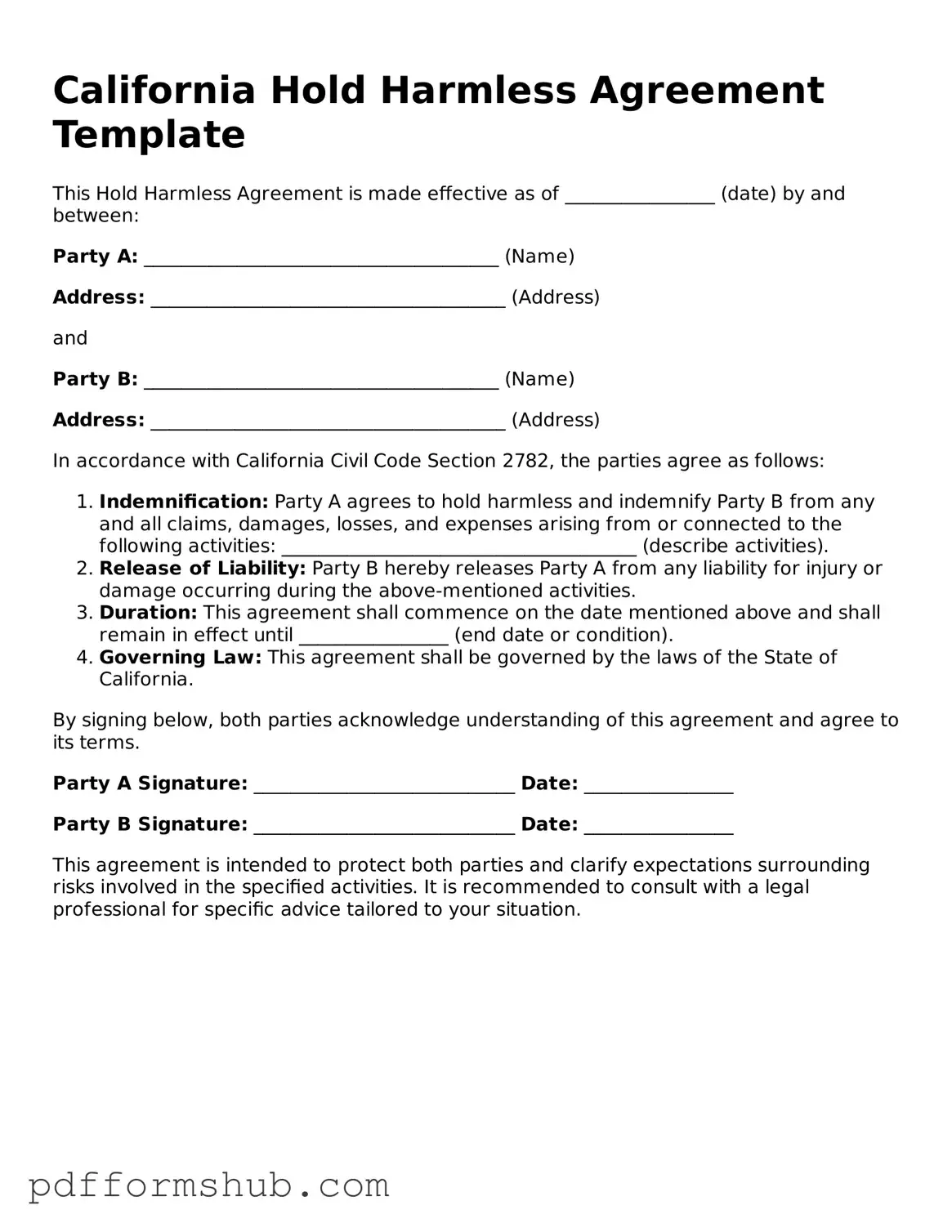Attorney-Verified Hold Harmless Agreement Form for California State
The California Hold Harmless Agreement is a legal document designed to protect one party from liability for damages or injuries that may occur during a specific activity or event. This agreement is commonly used in various situations, including rental agreements, events, and construction projects. To ensure your interests are safeguarded, consider filling out the form by clicking the button below.
Customize Form
